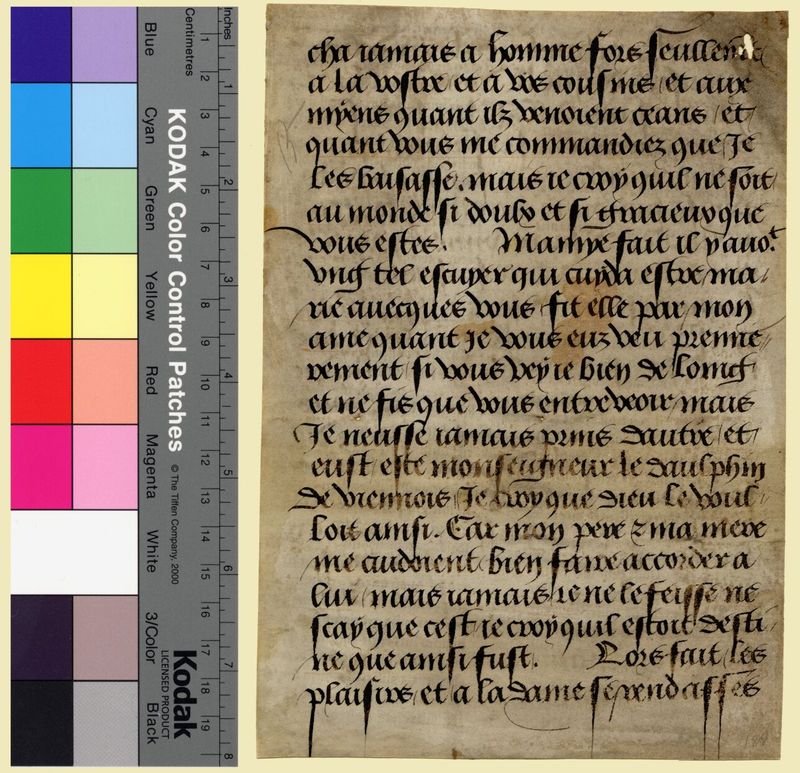Science of Love
Courtly Love in Medieval Romance
Although love features in many of the literary genres of the Middle Ages, it is associated in particular with medieval romance. Unlike genres such as the chanson de geste, which focused on military prowess, romances took love, and courtly love in particular, as their central theme. This sort of love – the chaste love of a knight for an unobtainable lady in a courtly setting – was meant to lead to the moral growth of the knight, but the results were just as often tragic.
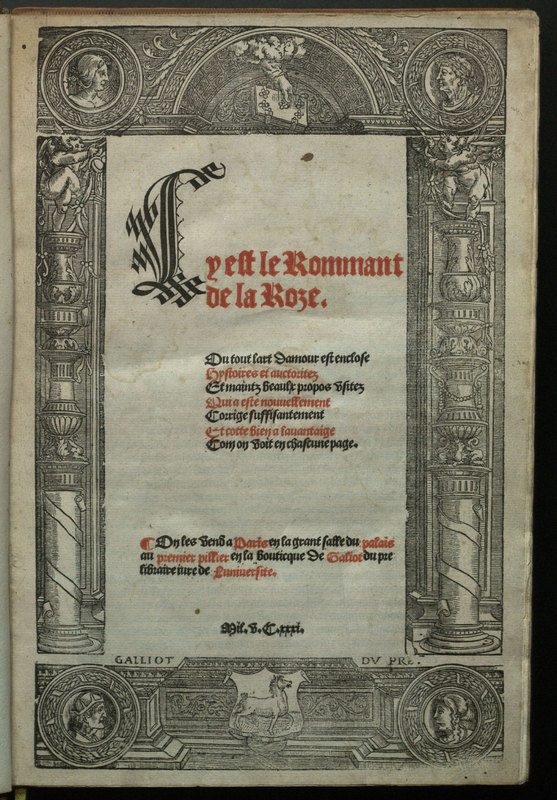
Guillaume de Lorris (c. 1200 – c. 1240 CE) and Jean de Meun (c. 1240 – c. 1305 CE)
Roman de la Rose.
France: c. 1240 and c. 1275.
PQ1527 .A1 1531
The Roman de la Rose was one of the most widely read books in Europe during the 14th and 15th centuries, so it is perhaps not surprising that it went through seven incunable editions – editions printed before the end of 1500. The first part of the romance, by Guillaume de Lorris, is set in a walled garden and describes a lover attempting to woo his beloved. The second part, by Jean de Meun, features a series of allegorical speeches on love. Most early printed editions of the poem included illustrations alongside the text. This 1531 edition, for example, which was printed for the Parisian bookseller Galliot du Pré, has sixty woodcuts.
Old and Middle French romances such as the Roman de la Rose and Paris et Vienne played an important role in the development of love as a courtly ideal. Unlike other literary genres of the time, such as epic, romances focused on courtly manners, and courtly love in particular. The Roman de la Rose, an Old French romance in verse, is a prime example, and is explicitly intended to teach the ‘art of love’. Guillaume de Lorris’s original version was around 4,000 verses in length, extended the romance by about 18,000 verses. Pierre de la Cépède’s Paris et Vienne, a prose romance, was originally written in Provençal, but only a Middle French translation survives. The romance tell the story of the love between Paris and Vienne. Vienne’s father initially forbids her from marrying Paris, but relents after Paris rescues him from the Moors while they are on crusade. This passage preserved on this manuscript leaf comes from the ‘happy ending’ of the romance and is not found in other surviving manuscripts. William Caxton, the first English printer, translated the romance into English and published the translation in 1485.
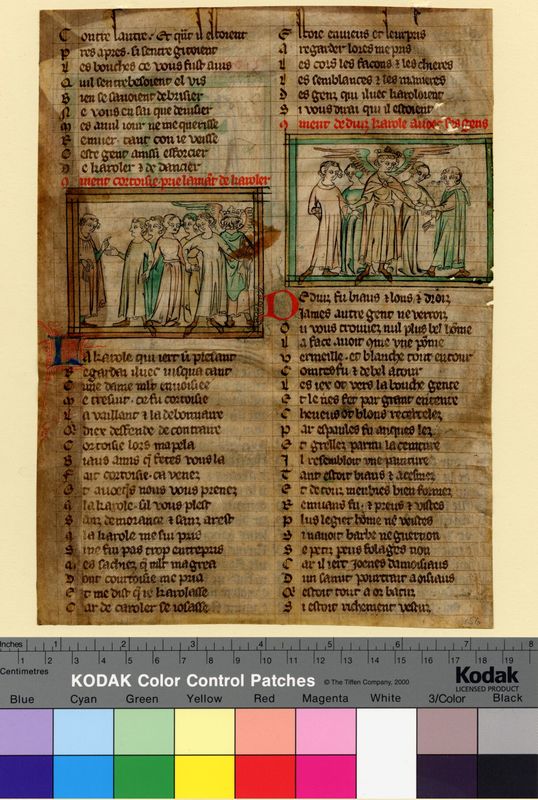
Guillaume de Lorris (c. 1200 – c. 1240 CE) and Jean de Meun (c. 1240 – c. 1305 CE)
Roman de la Rose.
France: c. 1240 and c. 1275.
Z109 .F73
Old and Middle French romances such as the Roman de la Rose and Paris et Vienne played an important role in the development of love as a courtly ideal. Unlike other literary genres of the time, such as epic, romances focused on courtly manners, and courtly love in particular. The Roman de la Rose, an Old French romance in verse, is a prime example, and is explicitly intended to teach the ‘art of love’. Guillaume de Lorris’s original version was around 4,000 verses in length, extended the romance by about 18,000 verses. Pierre de la Cépède’s Paris et Vienne, a prose romance, was originally written in Provençal, but only a Middle French translation survives. The romance tell the story of the love between Paris and Vienne. Vienne’s father initially forbids her from marrying Paris, but relents after Paris rescues him from the Moors while they are on crusade. This passage preserved on this manuscript leaf comes from the ‘happy ending’ of the romance and is not found in other surviving manuscripts. William Caxton, the first English printer, translated the romance into English and published the translation in 1485.
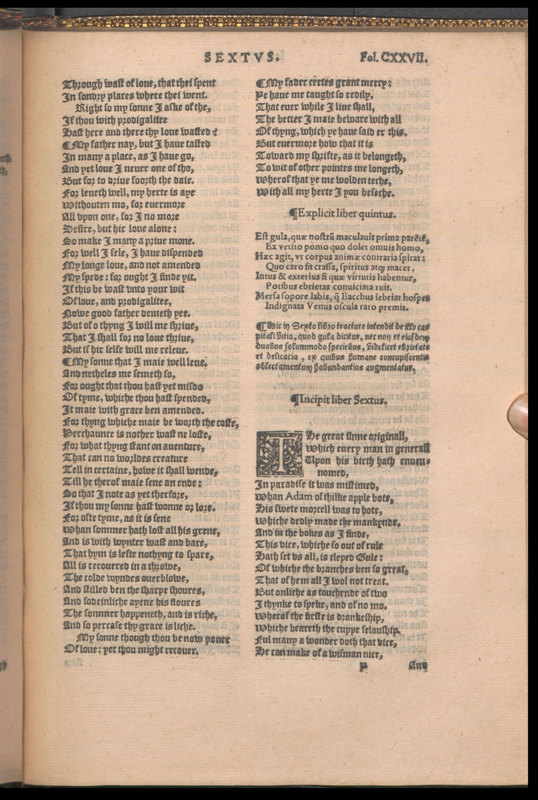
John Gower (c. 1330 – 1408 CE)
De confessione amantis.
London: Thomas Berthelette, 1554.
PR1984 .C6 1554
John Gower wrote three major works: the Mirour de l'Omme, in French; the Vox clamantis, in Latin; and the De confessione amantis, in English. The De confessione amantis – or The Lover’s Confession – is a series of short narratives about love put into the mouth of an aging lover. Several of the narratives also occur in the Canterbury Tales of Geoffrey Chaucer, whom Gower knew well. Thomas Berthelet, who printed this edition, was one of the most prominent printers working in England in the first half of the 16th century. He was both King’s Printer and King’s Bookbinder under Henry VIII.
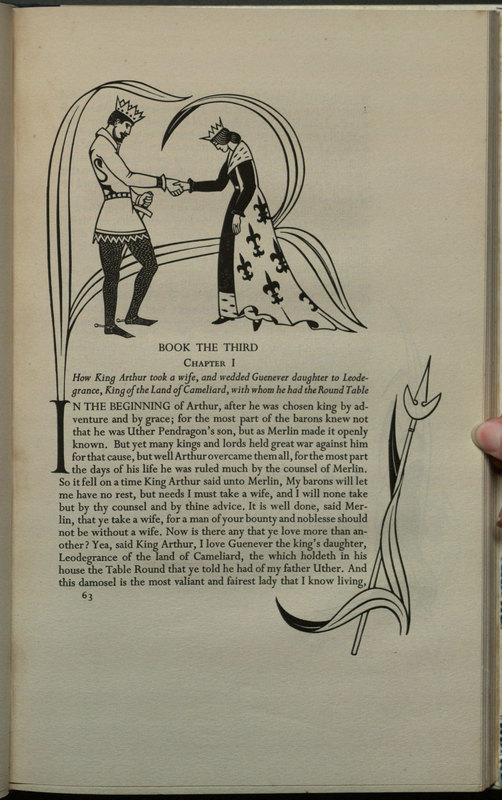
Thomas Malory (c. 1415 – 1471 CE)
Le morte Darthur.
London: Printed at the Golden Cockerel Press, 1936.
PR2043 .P64 1936
Thomas Malory’s Morte d’Arthur is the culmination of a tradition of Arthurian literature that runs right through the Middle Ages. This tradition weaves together the tales of dozens of characters, all associated in some way with King Arthur. Two of the most famous are Guinevere, Arthur’s queen, and Sir Lancelot, Arthur’s most accomplished knight. The forbidden love between Lancelot and Guinevere both epitomized and transgressed the medieval ideal of courtly love. The wood engravings in the Golden Cockerel edition are the work of Robert Gibbings, a major force behind the 20th century revival of this artistic technique.
